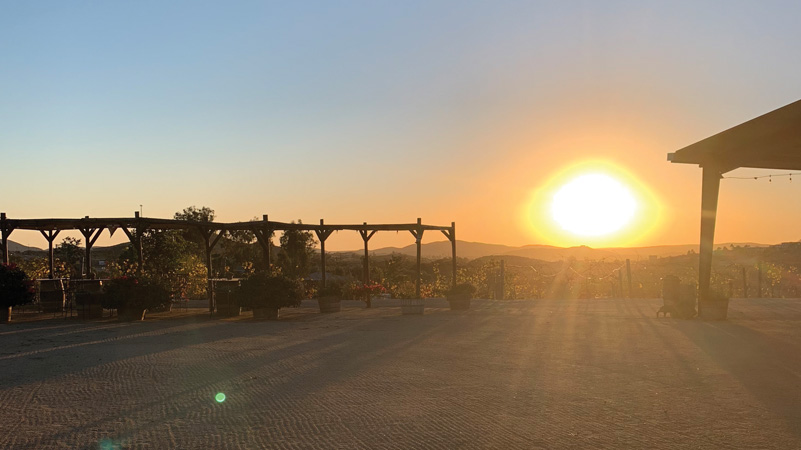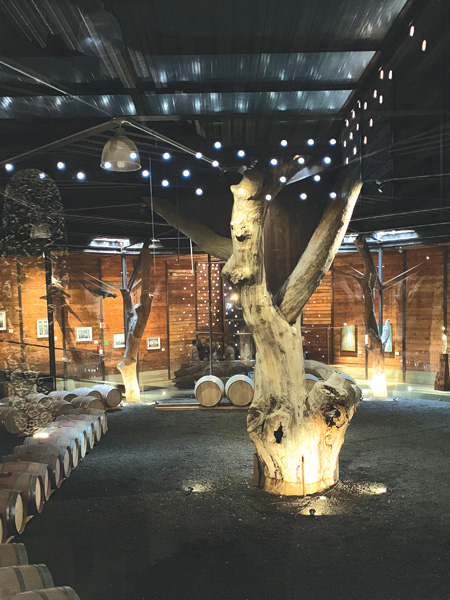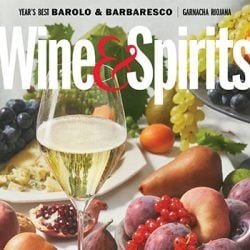“Some people haven’t had a Mexican wine in their life,” says Mathieu Girard, who lists several at Broken Spanish in Los Angeles. “I can serve them Bichi—the biodynamic and ‘weird’ guys of the Mexico wine world—or we can go in a different direction.” This would have been a challenge even five years ago, as there weren’t many Mexican wines in the market. Today, however, importers such as José Pastor Selections, La Competencia and La Misión are bringing a new wave of Mexican wines over the border, and sommeliers are responding: In our April 2019 Annual Restaurant Poll, eight Mexican wines made respondents’ lists of their Most Popular pours, including everything from pét-nat to chenin blanc and listán prieto.


While Bichi has generated the most interest in the US, they’re just one part of a growing community of enólogos defining the terroir of the desert southwest in Baja California. Drive from the border town of Tecate to Ensenada on the Pacific Ocean and the route winds over brown and red hills with elevation signs marking the 3,000-foot climb, then descends into the Valle de Guadalupe. While many of the roads in this rural area remain unpaved, inns, tasting rooms and spas have cropped up alongside newly planted vineyards. Offering less expensive accommodations than Napa or Sonoma, the region has become a popular spot for Californians and Mexicans to take weekend wine getaways.
Camillo Magoni may be the best local resource for a perspective on the past and the future of this region. Originally from a winemaking family in Valtellina, in Italy’s Lombardy, Magoni came to Baja 49 years ago, when he was offered a job with L.A. Cetto. At the time, the company was one of the two large-scale grapegrowers, along with Domecq; both sold most of their wines within Mexico. In addition to working the Cetto vines, Magoni purchased land throughout the 1960s, 285 acres in all, and started making his own wine for family and friends in 1999. Fourteen years later, in 2013, he established Casa Magoni and released his first commercial vintage.
He says his decision to market his wines coincided with the new restaurant culture that was developing in the area: A new generation of chefs were focusing on Baja-Med cuisine, offering visitors a chance to explore the local terroir through food and drink.
At his own estate, Magoni is experimenting to learn what grape varieties might work best in the hot and dry climate. He grows 70 varieties he’s culled from vineyards around the world, and blends them in unusual combinations, like viognier with fiano, or chardonnay with vermentino. He picks twice—once in July to capture acidity and again in September to get the texture he wants for each grape variety. The blends find a balance between structure and flavor that’s distinctly coastal and desert at the same time. Meanwhile, he hopes his diverse vineyard may provide some options in a changing climate.


Sergio Salgado takes a different approach to grape-growing at Viños del Sol. “I’m a hippie from Mexicali,” he tells me on the deck of his tasting room, looking out over his vineyards in the benchlands at the base of the hills. “I married a girl from Baja and I loved what I saw here. In 2007, this was all dirt roads, no houses, lots of coyotes, and we just watched it change.” His vines stretch north and west with oats growing between the rows, the vines netted to protect them from the birds. To the east, his vines are planted in a Fibonacci spiral, looking eerily like a crop circle, matching the logarithmic spiral pattern of certain trees and flowers.
“I don’t want to be too involved with grape varieties,” he says, having chosen chardonnay for his love of Chablis, and tempranillo in honor of his grandfather, who hails from northern Spain. “I want to focus on the land and I want to make these two wines the best that they can be.” His white wine is lean, structured, full of tart green-apple flavors. It’s a tight stainless-steel style with warm herbal notes. His tempranillo sees little oak, its flavors lifted and peppery, smelling of kicked-up sand. It’s the kind of distinctly Mexican wine that’s coming to define the new Baja.
Rachel DelRocco Terrazas reviews wines from Baja California. Subscribers can access those original tasting notes by searching here.
This story was featured in W&S August 2019.
is the former W&S Tasting Director turned freelance writer for the Vintner Project.
This story appears in the print issue of August 2019.
Like what you read? Subscribe today.

















